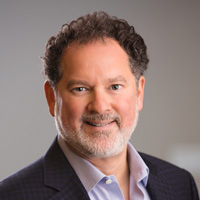Making the Most of Charitable Giving Before and After Retirement
How to best give to charity in a tax-smart way could depend on your age. Donor-advised funds and QCDs are two different methods to consider that can still deliver tax savings, even with today's higher standard deductions.


Charitable giving provides families with an opportunity to build a legacy and meaningfully impact the causes most important to them, but effective charitable giving requires a smart strategy. When and how you give makes all the difference.
Effective tax planning can ensure a larger portion of your donation goes toward moving the needle on the philanthropic priorities that matter most to you and your family. The right approach can be a win-win for both donors and causes.
With these shifts in mind, here’s a fresh look at the most effective ways to give before and after retirement, as well as the role a trusted adviser can play in helping you realize your charitable giving goals and execute a smart tax and estate planning strategy.
From just $107.88 $24.99 for Kiplinger Personal Finance
Be a smarter, better informed investor.

Sign up for Kiplinger’s Free Newsletters
Profit and prosper with the best of expert advice on investing, taxes, retirement, personal finance and more - straight to your e-mail.
Profit and prosper with the best of expert advice - straight to your e-mail.
A Higher Standard Deduction Shifts Charitable Giving Tax Strategies
Of the many sweeping changes included in the TCJA, the increase in the standard deduction to $24,400 for couples stands to have the biggest impact on charitable giving and tax planning. What’s more, the tax law caps state and local tax deductions at $10,000 and eliminates other itemized deductions.
The cumulative effect of these changes is that many more families will take the standard deduction. In fact, the Urban-Brookings Tax Policy Center estimates the TCJA will cut the number of high-income households taking a deduction for charitable gifts by more than half. That means fewer families will qualify for tax benefits from cash donations. Fortunately, there are other charitable giving strategies that preserve the tax benefits. These strategies depend on your age and whether or not you’re required to take distributions from an Individual Retirement Account (IRA) or employer sponsored 401(k).
Strategies for Donors Younger Than 70½
Appreciated securities remain a powerful philanthropic tool for donors. By gifting stocks held for more than a year that have appreciated in value directly to a charitable organization, donors can exclude the capital gain income they would be required to pay if they sold the stock themselves. They can also deduct the fair market value of the stock if they are itemizing deductions and not taking the standard deduction. These two advantages make appreciated securities a superior option to donating cash.
Another option for donors is to donate the appreciated securities directly to a donor-advised fund (DAF). With a DAF, donors gift assets to the fund and receive the tax benefit at that time. The assets will continue to grow while they’re in the fund, giving donors the ability and flexibility to grant charitable organizations monetary donations over a period of time. Assets eligible to be donated to a DAF most commonly include appreciated securities or cash, although cash is not recommended for tax purposes. However, certain DAF administrators also accept complex or non-publicly traded assets, including closely held stock (Limited Liability interests, private C- or S-Corp stock), land, life insurance, real estate, hedge fund interests and even artwork.
Here’s a scenario illustrating how a DAF can benefit a donor. Let’s say you plan to donate $10,000 a year over the next five years but have the $50,000 right now. You can place it in a DAF in year one and receive the tax benefit beyond the standard deduction that year. You can then grant $10,000 from the DAF over the next five years. What’s more, the assets will continue to grow in value with the market while they’re in the DAF.
Strategies for Donors 70½ and Older
Once individuals reach age 70½, they must take required minimum distributions (RMDs) from their IRAs and 401(k)s, assuming they’re no longer working. With the new standard deduction, a good strategy is often to gift all or a portion of the RMD directly to a charitable organization as a qualified charitable distribution (QCD). A QCD cannot exceed $100,000.
At first glance, a QCD might seem like the less beneficial option since there is no fair market value charitable deduction. But for donors taking the standard deduction, reducing the taxable income created by the RMD is most often the more tax-efficient strategy.
The Right Partner Can Empower a Better Charitable Giving Approach
Ultimately, the best charitable giving strategy is one that achieves your philanthropic and financial goals in the most effective way possible. That starts with a thorough and meaningful conversation with a trusted adviser who can help you think beyond annual giving to develop a long-term strategy and enduring legacy.
Donating appreciating securities, establishing DAFs and structuring legacy trusts are complex financial undertakings that require an expert touch. The right partner can facilitate these tools while maintaining that focus on maximizing charitable impact with smart tax and estate planning. A comprehensive approach to charitable giving focuses on your goals anchored by a meaningful relationship with a trusted adviser that ultimately delivers greater impact and greater peace of mind.
See Also: So, You Want to Start a Foundation? Great!
Profit and prosper with the best of Kiplinger's advice on investing, taxes, retirement, personal finance and much more. Delivered daily. Enter your email in the box and click Sign Me Up.

Grant Rawdin is Founder and CEO of Wescott Financial Advisory Group LLC. He founded the firm in 1987, which grew from the tax, business and estate services he provided to clients at Duane Morris LLP, a venerable AMLaw 100 law firm. Grant is an attorney, an accountant and a Certified Financial Planner™ and has served as adviser to many businesses, providing strategic, ongoing, and M&A advice. Grant and Wescott are recognized as leading the investment and financial planning industry in innovation, growth and size.
-
 Holidays Are a Rich Time to Talk Money With Young Adults: A Financial Adviser's Guide for Parents
Holidays Are a Rich Time to Talk Money With Young Adults: A Financial Adviser's Guide for ParentsThe most productive family financial conversations start with open-ended questions and a lot of listening. Don't let this opportunity pass you by.
-
 How Women of Wealth Are Creating a New Model of Giving Through Family Offices
How Women of Wealth Are Creating a New Model of Giving Through Family OfficesWomen who are inheriting wealth today are shifting from traditional philanthropy to creating sustainable systems to fund philanthropic gifts into perpetuity.
-
 I'm a Financial Planner: This Retirement GPS Helps With Navigating Your Drawdown Phase
I'm a Financial Planner: This Retirement GPS Helps With Navigating Your Drawdown PhaseReady to retire? Here's how to swap your 'peak earnings' mindset for a 'preserve-plus-grow' approach instead of relying on the old, risky 4% rule.
-
 Donating Stock Instead of Cash Is the 2-for-1 Deal You'll Love at Tax Time
Donating Stock Instead of Cash Is the 2-for-1 Deal You'll Love at Tax TimeGiving appreciated stock or using a donor-advised fund (DAF) this year would be smarter than writing a check to support your favorite causes. Here's why.
-
 Traveling With Purpose: What Zambia and Zimbabwe Taught Us About Slowing Down
Traveling With Purpose: What Zambia and Zimbabwe Taught Us About Slowing DownDon't treat retirement trips like they're an exercise in ticking off boxes. Slowing down and letting adventure unfold can create more meaningful memories.
-
 Investment Expert: Is Your Retirement Portfolio Too Late to the Profit Party?
Investment Expert: Is Your Retirement Portfolio Too Late to the Profit Party?If you're following the usual retirement investment model, you could be missing out on a potential profit period that companies see in the run-up to their IPOs.
-
 Losing Your Job? A Financial Planner's 6 Steps to Survive and Thrive
Losing Your Job? A Financial Planner's 6 Steps to Survive and ThriveWhether pink slips are just rumors at your company or layoffs have already landed, there are things you can do today to make the best of a tough situation.
-
 Oil Prices vs Investor Returns: It's What's Beneath the Surface That Counts
Oil Prices vs Investor Returns: It's What's Beneath the Surface That CountsEngineering, geology and operating discipline can determine the success of oil and gas projects as much as the cost per barrel.

